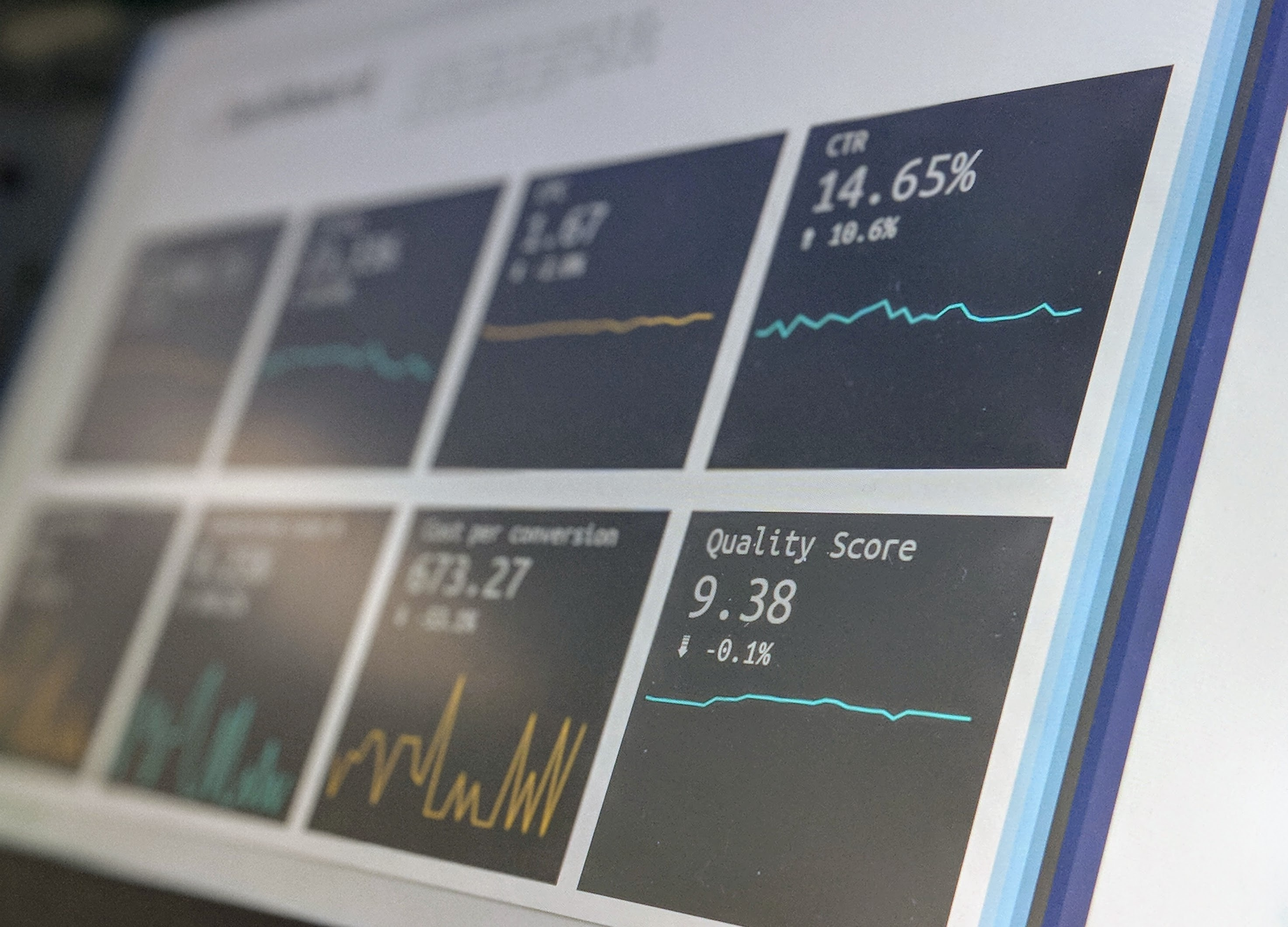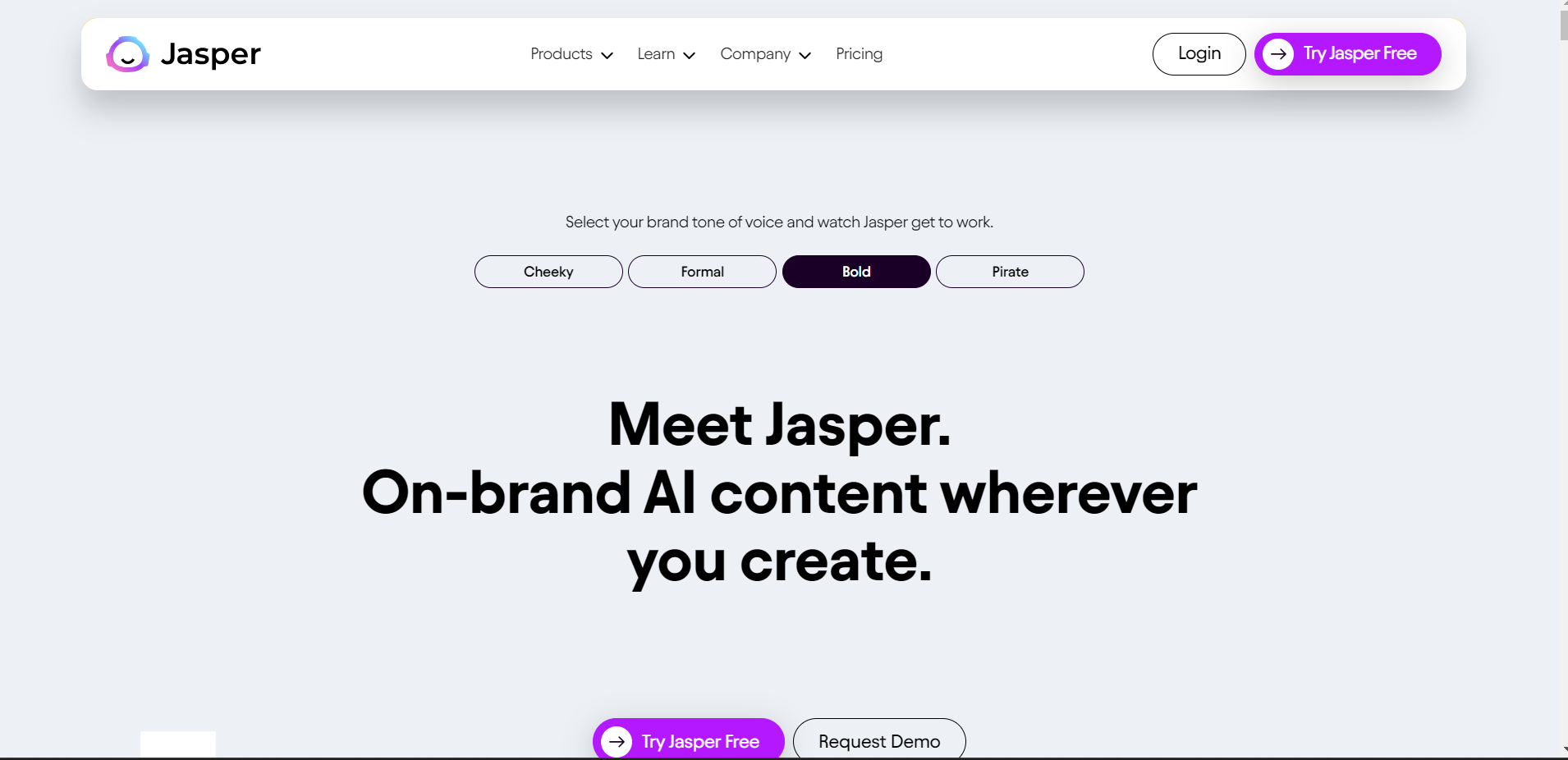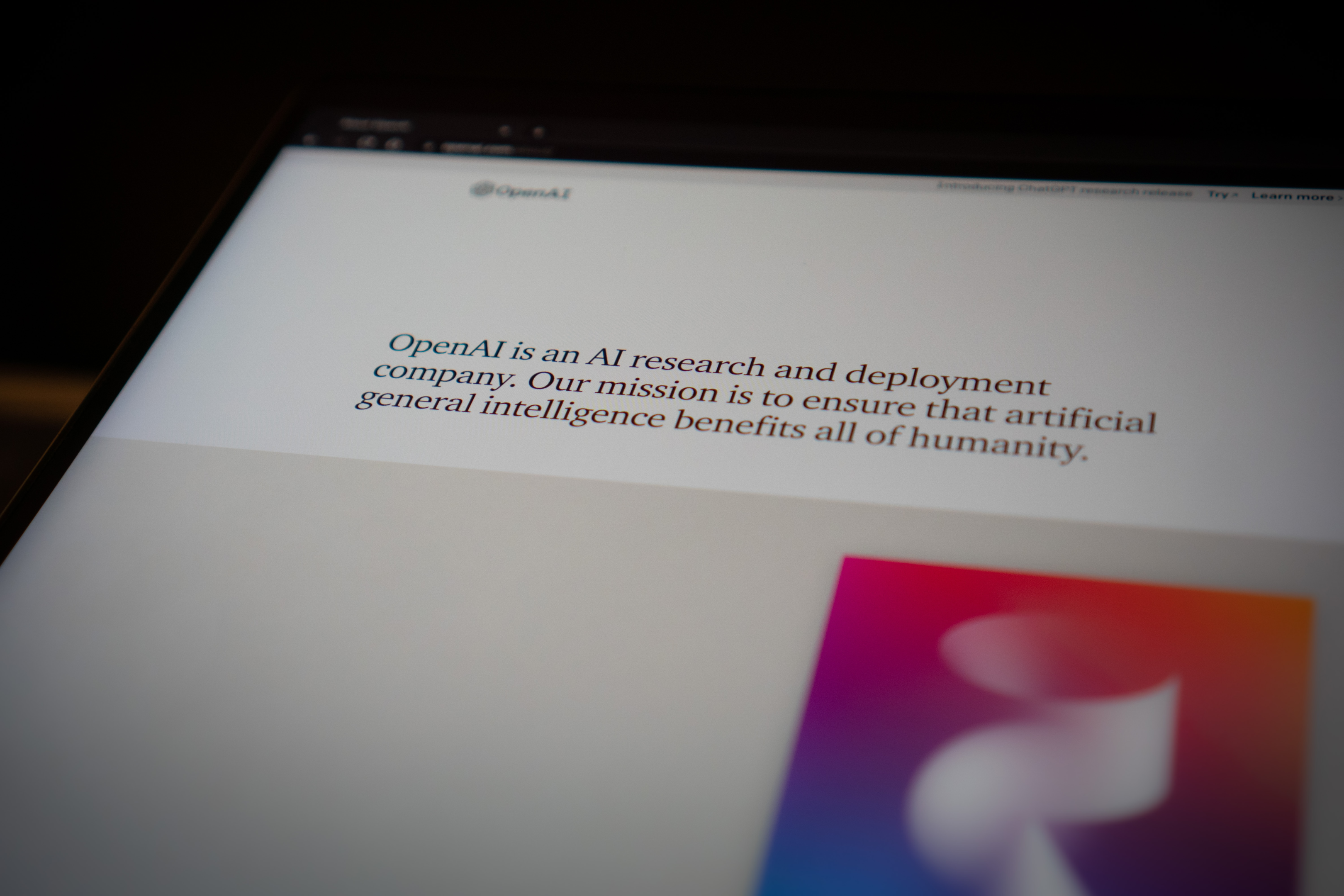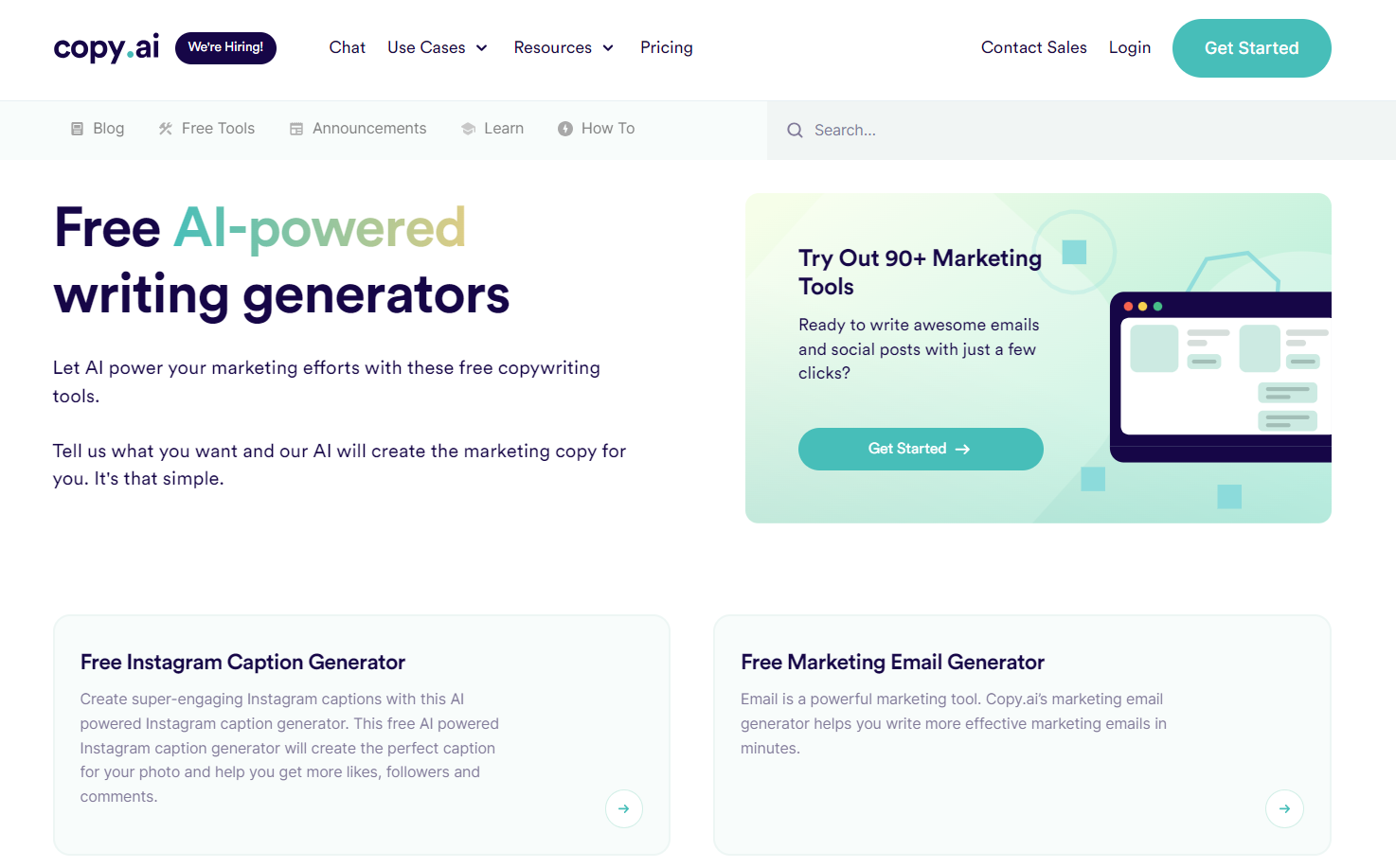Published on: October 11, 2023
Unlocking the Potential of AI Copywriting Tools
Author: Lauren Smith

The field of copywriting has undergone a significant transformation in recent years due to the proliferation of different types of artificial intelligence (AI) technology. AI copywriting refers to the use of machine learning algorithms and natural language processing (NLP) software to generate marketing content that closely resembles human-written copy.
While the idea of using machines to craft marketing messages is not entirely new, recent advancements in AI technology have propelled the field to new heights, enabling businesses to create compelling content at scale and with unprecedented efficiency.
The evolution of AI copywriting software
AI copywriting software has revolutionized the way businesses create content. It has come a long way since its inception, and its capabilities are constantly expanding. In the early days, basic automation techniques were used to generate copy, with limited success.
As machine learning algorithms grew more sophisticated, so too did the capabilities of the average AI copywriting tool and its associated technology. Today, AI-generated content ranges from simple product descriptions to sophisticated creative campaigns that mimic the voice and tone of a human writer.
From basic automation to advanced creativity
The evolution of AI copywriting has been remarkable. Early AI-powered writing tools relied on simple templates and rules to generate text. For example, a tool might automatically insert the name of a product into a boilerplate description template. While these tools were useful for generating basic content, they lacked creativity and often produced formulaic, unoriginal copy.
However, as machine learning algorithms were developed and NLP technology improved, AI copywriting tools became more sophisticated, enabling them to generate content that was increasingly nuanced and creative. Today, AI copywriting tools can analyze data and create content that is tailored to a specific audience, in a specific tone of voice, and even in a specific language.

Key milestones in the development of AI copywriters
The development of AI-powered writing technology has been marked by several significant milestones. One of the most notable is the introduction of NLP software, which allows machines to understand and interpret language in a more human-like way. This has enabled AI copywriting tools to create content that is not only grammatically correct but also contextually relevant and engaging.
Another milestone was the development of machine learning algorithms that can analyze large amounts of data and learn from it to improve their output. This has enabled AI copywriting tools to create content that is more accurate, relevant, and effective.
Perhaps the most significant advancement in recent years has been the development of GPT-3, a language generation model that can create natural-sounding text that is often indistinguishable from that written by a human. This breakthrough has opened up new possibilities for AI copywriters, enabling them to create content that is not only accurate and relevant AI content but also creative and engaging.
The evolution of AI copywriting has been remarkable, and its capabilities are constantly expanding. From basic automation to advanced creativity, AI copywriting has revolutionized the way businesses create content, and its potential is limitless.
Understanding the best AI copywriting tools’ technology
At its core, AI copywriting technology relies on two key components: natural language processing and machine learning.

With the rise of AI copywriting technology, businesses can now generate high-quality content at scale without the need for a team of human writers. But that doesn’t mean human writers no longer have a place. The best copywriters will always be sought after while AI replaces the weaker ones.
Natural language generation and processing
NLP is a form of AI that enables computers to interpret and generate human language. Essentially, it allows machines to read and comprehend text in much the same way that humans do. This technology has come a long way in recent years and is now capable of analyzing and understanding complex sentences, idioms, and even humor.

Natural language generation, on the other hand, is the process of using computer algorithms to create written or spoken language that appears to have been authored by a human. This can be anything from email newsletters and social media posts to product descriptions, meta descriptions, and blog posts. Together, these technologies form the foundation of AI copywriting.
Machine learning and deep learning
When computers can learn from information without being explicitly told or programmed to do so, it’s called machine learning. Essentially, this involves feeding a machine large amounts of data and then allowing it to analyze that data in order to improve its performance. This technology is particularly useful for tasks such as image and speech recognition, but it can also be used in the context of NLP and natural language generation.
Deep learning is a subset of machine learning that involves training neural networks to learn from complex, multi-layered data sets. This technology has been particularly useful in the field of natural language processing, where it has enabled machines to generate increasingly sophisticated and nuanced content.
GPT-3 and beyond: The future of the AI copywriting tool
GPT-3 is a language generation model developed by OpenAI that has generated a great deal of excitement in the copywriting community. This model is capable of generating natural-sounding text that is often indistinguishable from that of AI copy written by a human. However, while GPT-3 is undeniably impressive, it is not without its limitations.

As an example, the model can sometimes produce racist or sexist content, highlighting the importance of ethical considerations when using AI-generated content. As AI copywriting technology continues to evolve, it will be important for businesses to consider the ethical implications of using this technology and to ensure that their content is both accurate and inclusive.
Despite these challenges, the future of AI copywriting looks bright. With continued advances in NLP and machine learning, we can expect to see even better and more human-sounding content being generated by machines in the years to come. Plus, many tools already integrate with platforms like Google Docs, and continued integration with new types of software is all but guaranteed.
Benefits of AI copywriters for businesses
Leveraging AI in copywriting is a game changer for businesses. The benefits of incorporating AI into their copywriting processes are evident and multifaceted. This cutting-edge technology, which combines the capabilities of AI with the creativity of content creation, offers an array of compelling benefits.
These advantages are not only changing the way businesses approach content creation but also reshaping the landscape of digital marketing. From enhancing productivity to personalizing marketing efforts, the benefits of AI copywriting are far-reaching and significant. This powerful technology offers a range of key advantages, including but not limited to these key features:
Increased efficiency and productivity
AI copywriting tools can generate content at a much faster pace than human writers. This means that businesses can create more content in less time, freeing up resources for other tasks. For example, a company that runs a blog can use AI copywriting tools to generate multiple blog posts in a day, allowing them to publish fresh content more frequently and attract more readers and followers.

Consistent brand voice and messaging
AI copywriting tools can be trained to mimic a particular brand voice or tone, ensuring that all content is consistent and aligned with a company’s messaging. This is particularly useful for businesses that have a strong brand identity and want to maintain a consistent tone across all their marketing materials. With AI-powered copywriting, companies can ensure that their brand voice is always present and consistent, no matter who (or what) is writing the content.
Scalability and cost-effectiveness
With AI copywriting tools, businesses can create large volumes of content at a fraction of the cost of hiring multiple human writers. This can be especially useful for small businesses that don’t necessarily have the budget to hire a full-time writer or a team of writers. An AI tool can help these businesses create high-quality content without breaking the bank.
Also, AI copywriting tools can be easily scaled up or down depending on the business’s needs. For example, a company that is launching a new product or service may need to create a lot of content in a short period of time. With AI copywriting, they can quickly generate the content they need without having to hire additional writers or spend a lot of money on advertising. Then, when it’s time to scale back, there are no unnecessary layoffs or awkward conversations.
Personalization and targeted marketing (especially for social media posts)
AI copywriting technology can be used to create highly targeted marketing messages that are tailored to specific audiences and demographics. This is because AI copywriting tools can analyze data and customer behavior to create personalized content that really speaks to the company or individual’s target audience.
An example would be an e-commerce website that can use AI copywriting to create product descriptions and landing pages that are tailored to the user’s browsing history and purchase behavior. This can help increase sales by presenting the user with products that are more likely to interest them. AI copywriting tools can also create written content like website copy and ad copy for Google ads and ad copy on other search engines, too.

Another way to use AI copywriters is for social media posts. AI copywriting tools can generate content for blog post ideas, social media posts, social media captions, long-form content, SEO meta descriptions, and so much more. The possibilities are almost endless – basically, if you need something written, AI writing tools have you covered.
Data-driven decision-making
AI copywriting tools can analyze vast amounts of data to guide content creation strategies. This means that businesses can make more informed decisions about the most effective types of content to produce based on data-driven insights, streamlining their marketing efforts.
Automated content A/B testing
AI copywriting allows for automated A/B testing of different content strategies. Businesses can quickly generate multiple variations of content to test which version resonates most with their audience, optimizing their content strategy over time. In the past, this type of testing was often too time-consuming and cost prohibitive.
Global reach and localization
AI copywriting tools have the capability to automatically translate content into multiple languages, ensuring consistency while enabling businesses to reach a global audience. This localization can help companies break into new markets more easily.
24/7 content generation
With AI copywriting, content creation doesn’t have to stop outside of regular business hours. AI tools can generate content around the clock and save time, allowing businesses to keep up with the demands of a 24/7 digital world.
Improved SEO
AI tools can be programmed to follow SEO best practices and keep up with algorithm changes, helping businesses improve their rankings and visibility online. If organic content marketing is part of your growth strategy as a business, SEO meta descriptions, blog posts (and writing entire blogs) is on your mind. Wouldn’t it be nice to have new AI copywriting software to take over the writing process, be your built-in plagiarism checker and AI article writer, and generate all your content ideas in just a few clicks? There are plenty of great AI software and tools that specialize in SEO content creation. No more writer’s block!

Ease of content updates
AI copywriting tools can also facilitate easy content updates. For instance, if a business needs to make a change in its product descriptions or brand messaging across multiple platforms, AI tools can make these updates quickly and efficiently.
Versatility across different content types
Because they can produce a wide range of content types, from blog posts and social media updates to product descriptions and email newsletters, AI copywriting tools really are your best friend when you require copywriting for multiple channels. This versatility allows businesses to maintain a consistent brand voice across all platforms and content types.
Decreased dependence on external agencies
By using AI copywriting tools, businesses can reduce their reliance on external marketing agencies for content creation, allowing them to keep more of their operations in-house and potentially save on outsourcing costs. AI copy tools also allow for a more hands-on approach rather than having an unknown company responsible for your content and content ideas. Staff will have more time to review content in-house because they don’t have to spend hours creating it themselves.

Ethical considerations of AI copywriters
Despite the many advantages of AI copywriting, there are also several ethical considerations and challenges to be mindful of.
Plagiarism and originality concerns
AI copywriting tools can sometimes produce content that closely resembles existing content, raising concerns about plagiarism and originality. To mitigate this, it is important to ensure that AI-generated content is thoroughly vetted and reviewed for originality before it is published.
Job displacement and the future of human copywriters
The rise of AI copywriting has led some to question the future of human copywriters. While it is true that AI technology can create high-quality content, there are still many aspects of copywriting that require human intuition and creativity. As such, it is unlikely that AI will completely replace human writers anytime soon.

Bias and fairness in AI copywriters
AI copywriting tools can sometimes perpetuate biased or discriminatory content, highlighting the importance of ethical considerations in the use of this technology. It is essential to ensure that AI-generated content is aligned with a business’s values and is free from any biases or discriminatory language.
Ethical considerations when using an AI copywriting tool
The advancement of AI copywriting opens up a new set of ethical considerations. Some critics argue that AI-generated content could be considered a form of plagiarism, especially if it closely mimics human-written content. Therefore, it’s essential for businesses to ensure they use AI tools responsibly and maintain transparency about the origin of their content.
Other AI Copywriting Challenges
Aside from the ethics of using these tools, there are a few other challenges to be aware of before you implement any of the best AI copywriting tools.
Quality of AI copywriters’ content
While AI can produce content quickly and at a low cost, the quality of this content can vary. Current AI models can struggle to create engaging, creative, and nuanced content that human writers excel at. Therefore, while AI can be a fantastic tool for generating content at scale, human oversight and editing may still be necessary to ensure the content meets high-quality standards.

Training and maintenance of an AI copywriting tool
Implementing AI copywriting tools involves an initial investment of time and resources to train the models to mimic a brand voice. Additionally, as a company’s messaging strategy evolves, the AI tools may need retraining or fine-tuning. These factors should be considered when evaluating the cost-effectiveness of AI copywriting. Make sure you plan to create multiple prompts and constantly review your AI tool’s output.
Security and privacy in AI copywriting
AI copywriting tools often rely on vast amounts of data to function effectively. As such, businesses must consider the security and privacy implications of using these tools. Ensuring that data used to train AI models is securely stored and properly anonymized is paramount in an era where data privacy is a significant concern.

Future trends in AI copywriting
The field of AI copywriting is rapidly evolving, driven by advancements in AI and machine learning technologies. In the future, we can expect to see AI tools that can generate even more creative and engaging content, further blurring the line between human and AI-generated copy.
Once you embark on implementing AI writing tools into your workflow, make sure you stay up to date on any improvements. That way, you can be sure you’re getting the most out of the software.
AI vs human copywriters
While using an AI copywriting tool has numerous benefits, it’s important to remember that it’s a tool meant to augment human creativity, not replace it. AI excels at many writing tasks and generating content quickly and at scale, while human writers bring a level of creativity, nuance, and emotional intelligence that AI currently cannot replicate. The best content strategy is often a blend of AI and human effort, leveraging the strengths of both.
With these considerations in mind, it’s clear that AI copywriting offers a powerful tool for businesses. It can help increase efficiency, maintain brand consistency, scale content production, and provide personalized marketing, all while potentially saving costs. However, like any tool, it must be used responsibly, with a clear understanding of its strengths and limitations.

8 best AI copywriting tools
- Hypotenuse
- ChatGPT
- Scalenut
- Rytr
- Article Forge
- SurferSEO
- Writesonic
- Copy.ai
In a sea of available options, it’s good to know which are the best AI copywriting tools, and if you want more details, check out our post on the 11 best AI copywriting tools for 2023.
Getting the most out of AI copywriting software
Overall, AI copywriting technology has the potential to totally shake up the way businesses produce and distribute content. By leveraging the power of NLP and machine learning, companies can create high-quality content at scale and with unprecedented efficiency.
AI copywriting has numerous benefits for businesses. From increased efficiency and productivity to personalized and targeted marketing, AI copywriting can help businesses create high-quality content that resonates with their target audience, all while saving time and money.
It is important to remain mindful of the ethical considerations and challenges associated with this technology in order to ensure that AI-generated content is aligned with a business’s values and goals. When used correctly, AI copywriting can unlock a new era of creativity and efficiency in the world of marketing and advertising. To find the biggest selection of AI copywriting apps and tools, click here.
Lauren Smith
TopApps writer
Recent Articles

In 2024, your smartphone camera is about to get a whole lot smarter. AI camera apps are transforming the way we capture and...
Read More
Learn how to use advanced search tools, newsletters, and reviews to uncover the perfect AI-focused podcast for you.
Read More
AI chatbot vs virtual assistant? who reigns supreme? We're dissecting the differences, strengths, and weaknesses, using data-driven insights.
Read More